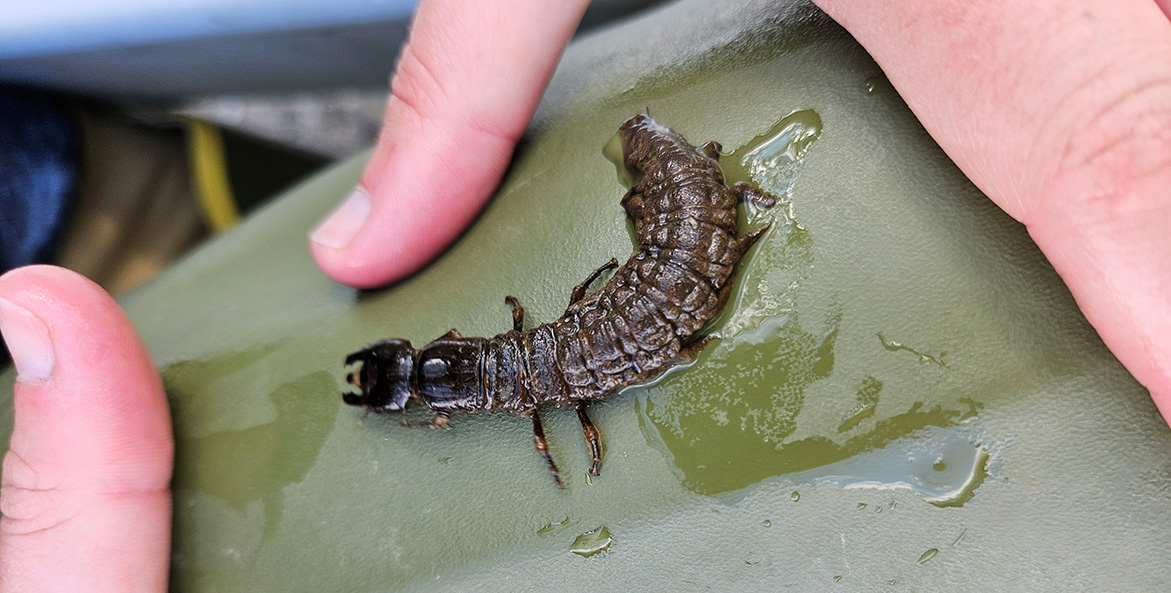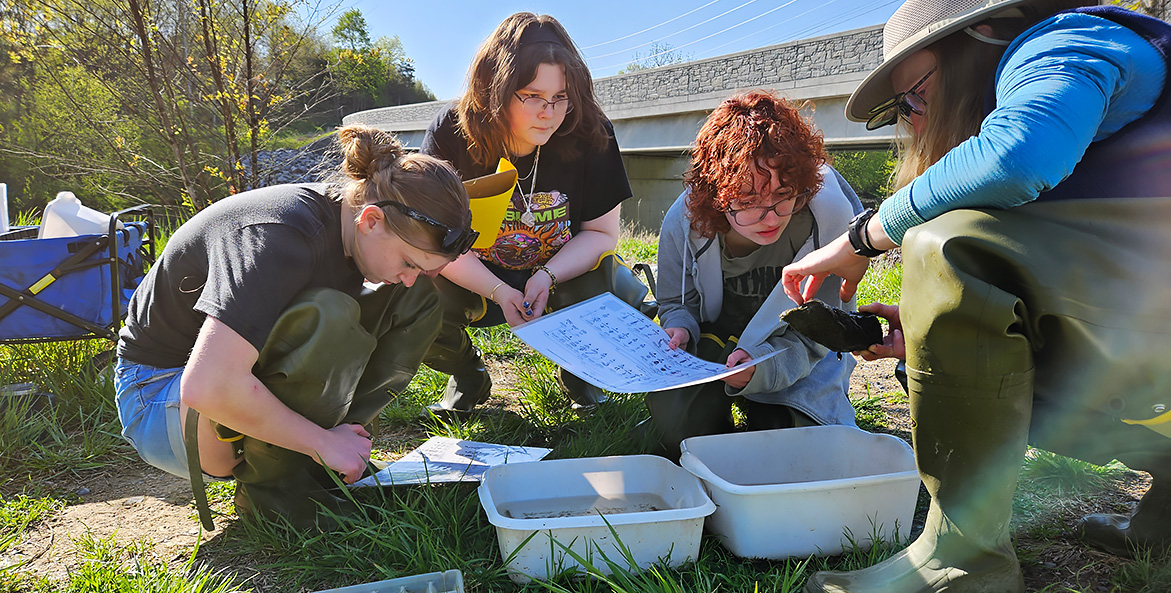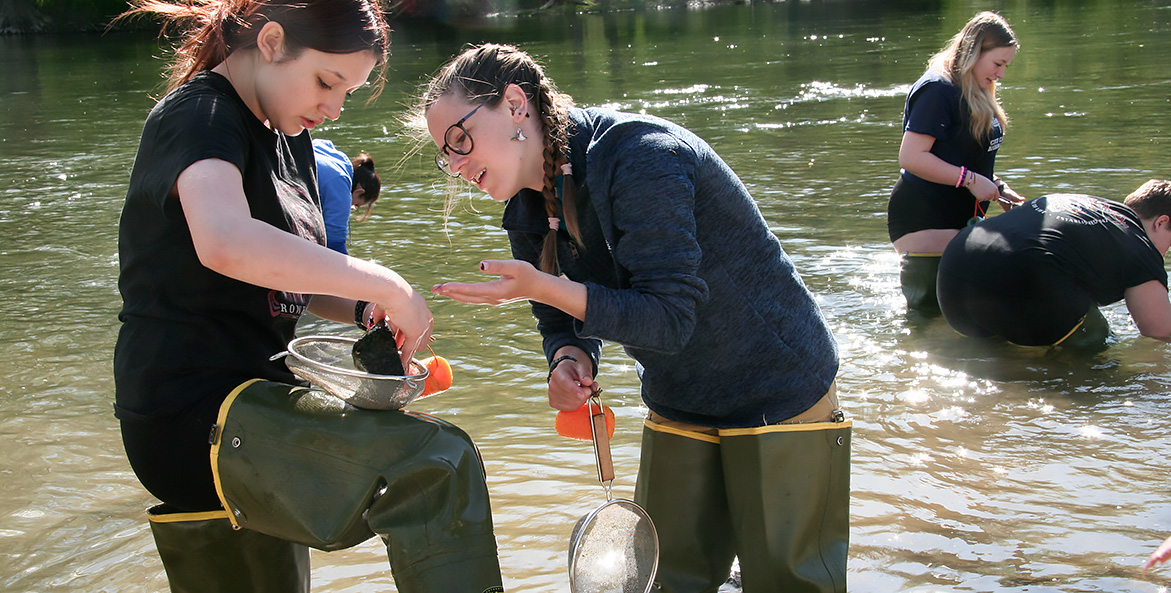Below the surface of our rivers and streams is a bug’s world that is trying to tell us something. Much like bog turtles, brook trout, and hellbenders, macroinvertebrates are indicators with an important message about the health of local waters.
Macroinvertebrates, or "macros,"—with catchy names like hellgrammite, dragonfly, and water penny beetle—are organisms without backbones that are incredibly sensitive to human-influenced changes to streams and rivers.
They provide important clues about stream health, good or bad.
Pieces of the clean water puzzle provided by the presence, or absence, of macroinvertebrates are part of the lesson plan for CBF students, especially mobile canoe programs in fresh water like the Rivers and Streams Program in Pennsylvania.
Over 1.5 million students throughout the Chesapeake Bay watershed have participated in CBF Education programs in the last 50 years. Many have learned about local water quality from doing stream surveys of macros by collecting, identifying, and categorizing the ones they find.
Students disturb the streambed with their feet to capture macros that flow into strainers. All macros are considered catch and release. Point values assigned to sensitive, facultative, and tolerant macros—based on their sensitivity to water quality—are tabulated and the sum produces a water quality rating.
Based on CBF’s scientific collector’s permit, findings and locations are also reported to the Pennsylvania Fish and Boat Commission and become part of a bigger picture of critter, habitat, and water health.
While the absence of certain species of macros may suggest a water’s chemical balance, collecting chemical data during stream surveys brings a fuller picture into view.
“Biological communities might not be impacted by pollution as quickly,” says Kassie Fenn, CBF Student Leadership and Educator Coordinator for Pennsylvania. “Excess nitrates and phosphates might not be impacting certain biological communities right away.”

Identifiable by their large mandibles, hellgrammites dine on other macroinvertebrates.
BJ Small/CBF Staff
Many Types of Macros
Macros are small but can be seen without the assistance of a microscope. Some of these critters live their entire existence in water, while others spend only a portion of their life cycles in aquatic environs, taking to the land and/or air upon maturity.
Each macro plays a different role within their aquatic ecosystems. Predator macros are voracious carnivores. For example, hellgrammites are the larval form of dobsonflies. After hatching from egg casings in freshwater streams, they are found on overhanging rocks or branches. Quite identifiable by their large mandibles, hellgrammites dine on other macroinvertebrates.
The “shredders” are decomposers that break down leaf material and provide the building blocks for the ecosystem. Macros that filter-feed algae maintain water quality for other organisms.

Students identify and categorize macros they have found in a local stream. After they are studied, all macros are released.
BJ Small/CBF Staff
Sensitive Indicators
The presence of sensitive species like the hellgrammite, dobsonfly, and mayfly can suggest stream health. But the absence of macros isn’t always a correlation to poor water quality.
“Just because we didn’t find mayflies in the spring doesn’t mean we won’t find them in the fall,” Fenn adds. “Sometimes after a heavy rain event, literally all the macros get punted downstream.”
A lack of sensitive species can impact the food web and survival of other critters. Not finding sensitive mayflies, stoneflies, damselflies, and others can indicate a diminished population of brook trout, hellbenders, and bog turtles that like to dine on them.
Anglers appreciate the sensitive macros, studying and mimicking many of them with flies and other artificial lures that look like the fish’s current food supply.
Macros considered facultative, like crayfish and water penny, are a little less impacted by minor fluctuations in water conditions that greatly influence sensitive types. This makes the facultative bunch the most significant indicators.
“When we stop seeing facultative species that suggests that something is wrong,” Fenn adds.
Water penny beetle larvae feast on thin layers of algae that grow on the surface of submerged rocks and pebbles. In larvae form most resemble little grubs, but flatter, resembling the coin that is their namesake. Especially sensitive to changes in their aquatic habitats, any increase in the thickness of algae (often a result of increased nutrient-levels in water) will greatly impact the water penny’s ability to survive.
Tolerant species like leeches, scuds, and some crayfish tolerate sediment. They tend to burrow and feed on algae. Fenn refers to them as “war horses.”
“In really unhealthy streams you are not going to find much other than leeches and scuds,” Fenn says. “They are around in a nuclear apocalypse.”
There is still a lot to learn about the roles of the tiny water bugs below the water’s surface. In the meantime, “It is important to protect organisms and ecosystems because we don’t know what the impacts will be when we don’t have them,” Fenn adds.




